DIY Guide To Deep Cleaning Your Dishwasher
Hard water stains, greasy food deposits, or drainage issues affecting your dishwasher? Deep Cleaning Your Dishwasher can be preventive maintenance.
DIY Guide To Deep Cleaning Your Dishwasher
In a perfect world, cake would have zero calories and dishwashers would be self-cleaning — after all, they’re a cleaning appliance, aren’t they? But the reality isn’t so kind, and dishwashers need to be maintained so they can function properly. You and your family eat off those dishes — you want them to be properly cleaned!
While the occasional wipe-down keeps things looking tidy, you need to deep-clean your dishwasher every month (or every few months, at most) to keep it working smoothly.
Over time, your dishwasher can develop a smell from excess food built up. And it may even look filthy. This may even prevent your dishes from getting a proper wash. On top of that, it becomes a breeding ground for bacteria. GROSS!
In theory, your dishwasher should be constantly cleaning itself—but sadly, it isn’t. Grease and grime can also prevent your dishwasher from draining properly. Dishwashers need to be maintained to function properly.
While the occasional wipe-down keeps things looking tidy, you need to deep-clean your dishwasher every month (or every few months, at most) to keep it working smoothly.
Why clean your dishwasher?
We shouldn’t need convincing, but there are several reasons to clean your dishwasher. Accumulated dirt and debris could damage the internal mechanisms of your appliance. Limescale buildup also ruins the quality of the water running through the dishwasher.
Leftover food debris poses health risks. And a poorly functioning machine will take more energy to clean, and will shorten its lifespan. If you’re short on time or want to be reassured of thorough cleaning, you can get a professional cleaner to handle things. But if you’d rather go DIY, roll up your sleeves and empty the rack —it’s cleaning time!
While you are doing all this heavy cleaning, you may find this mixture to Clean Kitchen Cabinets And Degrease All Naturally – super easy.
Benefits of Cleaning Your Dishwasher
-As with anything, maintenance is cheaper than replacement and is the best prevention. Extending the life of your dishwasher.
-Saves money
-Prevents bacteria from growing. Keeping your dishes (actually) clean.
-Prevents smells away
-Prevents drainage clogs
Supplies Needed
No need to purchase anything — to clean your dishwasher. All you need are products you have at home! Items include:
- Baking Soda or Borax – Will help remove food, build up and eliminate odors
- White vinegar – Helps to remove grime, dissolve mineral deposits, and sanitize your dishwasher.
- Microfiber cloth or old cleaning cloths
- A toothpick or similar pointy item
- An old toothbrush
- Screwdriver – if needed to remove small parts that are filthy
- A few containers – to hold and soak loose small parts
- Your favorite music playlist for the company
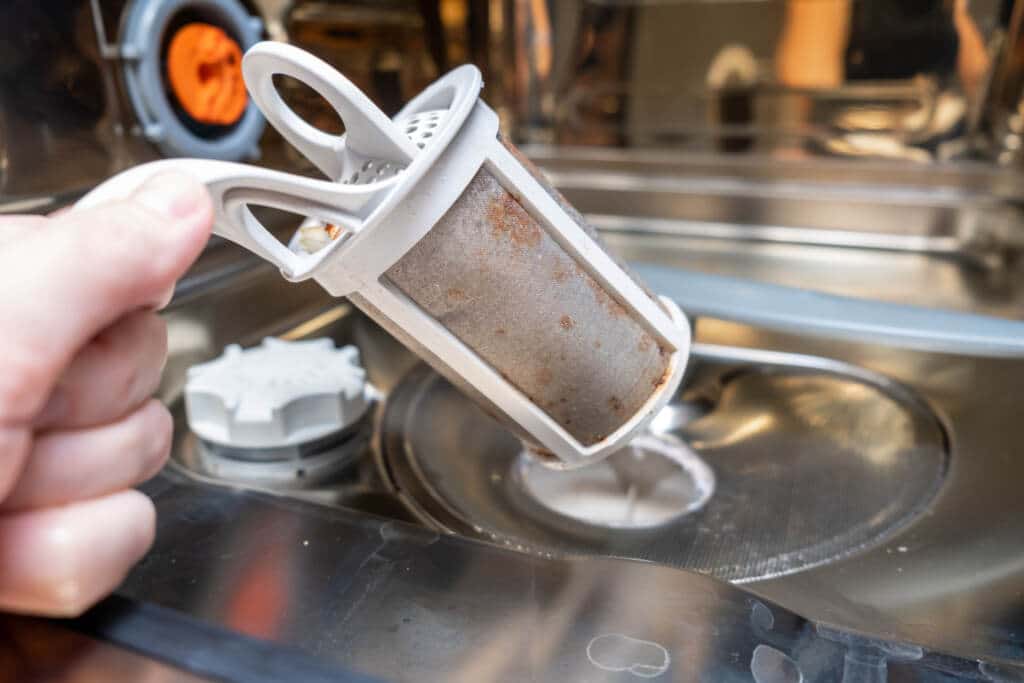
Instructions Clean Your Dishwasher
Important note! Never mix vinegar with bleach when cleaning your machine—or anything else. Doing so will release toxic chlorine and chloramine vapors.
STEP ONE: Gather your supplies
STEP TWO: Remove trays – Remove your dish racks, including the utensil holder. This will allow you better sightlines for inspecting your dishwasher.
STEP THREE: Inspect your machine. This is the time to give your machine a good once over. Note parts that need to be removed. At this point, feel free to pick up and dispose of loose food particles.
STEP FOUR: Clean all removable parts. Removing any small parts, such as your filter or catch drays. You may notice a build-up of staining or even mold. Wash with warm soapy water. You may even have to consider soaking these parts in a large bowl with a mixture of vinegar and water to remove scale build-up. Have the manual on hand for reference (or look it up online if you “misplaced” it!).
STEP FIVE: Clean the interior. Replace all the parts that you removed initially and then run a vinegar rinse cycle. Simply place a dishwasher-safe bowl filled with one cup of distilled white vinegar on the top rack and run a normal (hot) cycle without detergent or dishes. You can opt to pause the cycle halfway through to let the vinegar sit for a while.
Afterward, sprinkle some bicarb soda over the bottom of the dishwasher, then run a short, hot cycle again. You can also use borax to clean your machine. The beauty of borax is that it can be applied while there are dishes in the machine. Load your dishwasher, as usual, add 1/4 cup of borax to the bottom, add normal detergent to the dispenser, and run as usual.
STEP SIX: Clean the exterior. Using your microfiber cloth, wipe down the front of your dishwasher. I like to use Sprayway glass cleaner. This stuff is amazing. Removes all fingerprints and works great on stainless steel too.
How Often Should You Clean Your Dishwasher?
Ideally, we should be cleaning our dishwashers regularly. But sometimes life doesn’t allow us to do it all in one shot. If you can clean your dishwasher monthly, that would be best to prevent a buildup of germs and maintain the efficiency of the machine.
If you can’t, here are our suggestions:
Once a month or so, pull out the bottom rack and remove the filter system (if you have a manual one), which usually consists of several interlocking parts. Clean with warm soapy water in the sink. You may need a small toothbrush to dislodge any stuck food or grime.
It is also important to check the owner’s manual or manufacturer’s website to find out how frequently you need to clean the filter.
Daily check for loose food and remove it.
Once a week, inspect for staining, built-up grime, and loose food partials. If need be, wipe down the inside of your dishwasher using a soft cloth saturated in white vinegar. Pick up loose food and place it in the trash.
Once a week or as needed, clean the outside. If you have small toddlers, you may just give up on this part. Tiny hand smudges are a daily occurrence.
Other Helping Cleaning Solutions
The Best Way to Clean Your Front-Loading Washing Machine
10 Kid Safe Homemade Cleaning Products
How To Clean Kitchen Cabinets And Degrease All Naturally
5 Tips To Help You Organize Your House Quicker
This post may contain affiliate links or sponsored content. Disclosure Policy

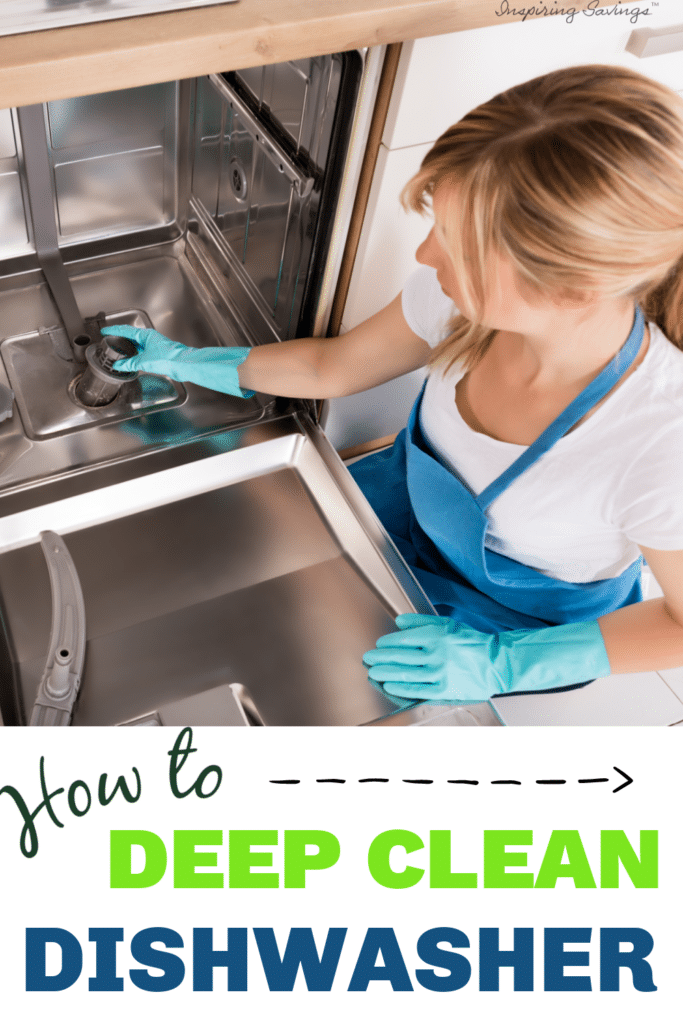
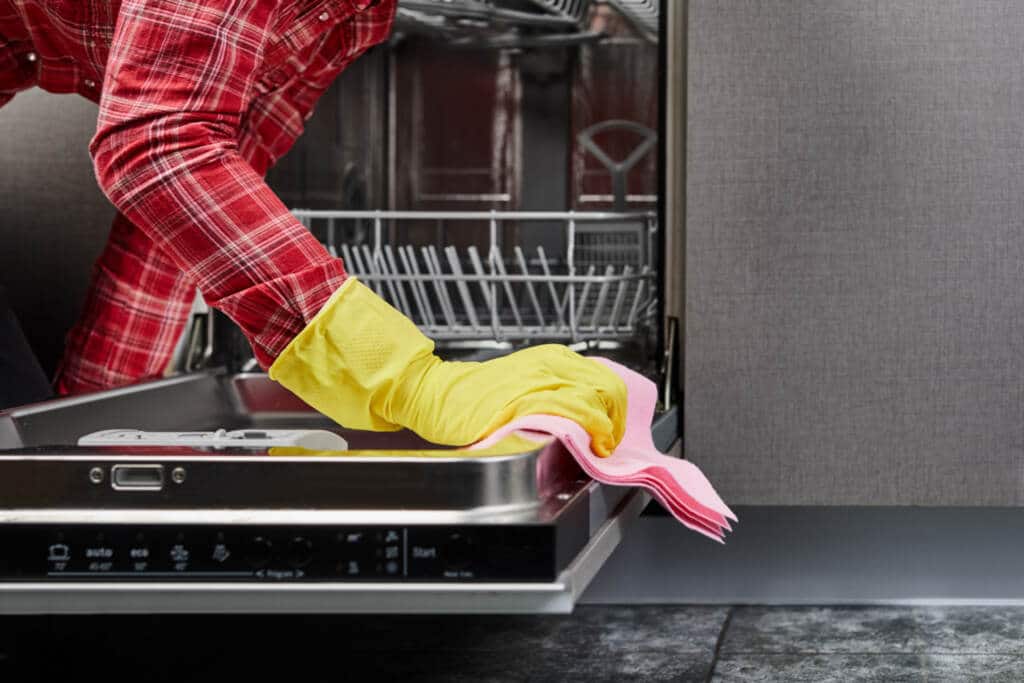
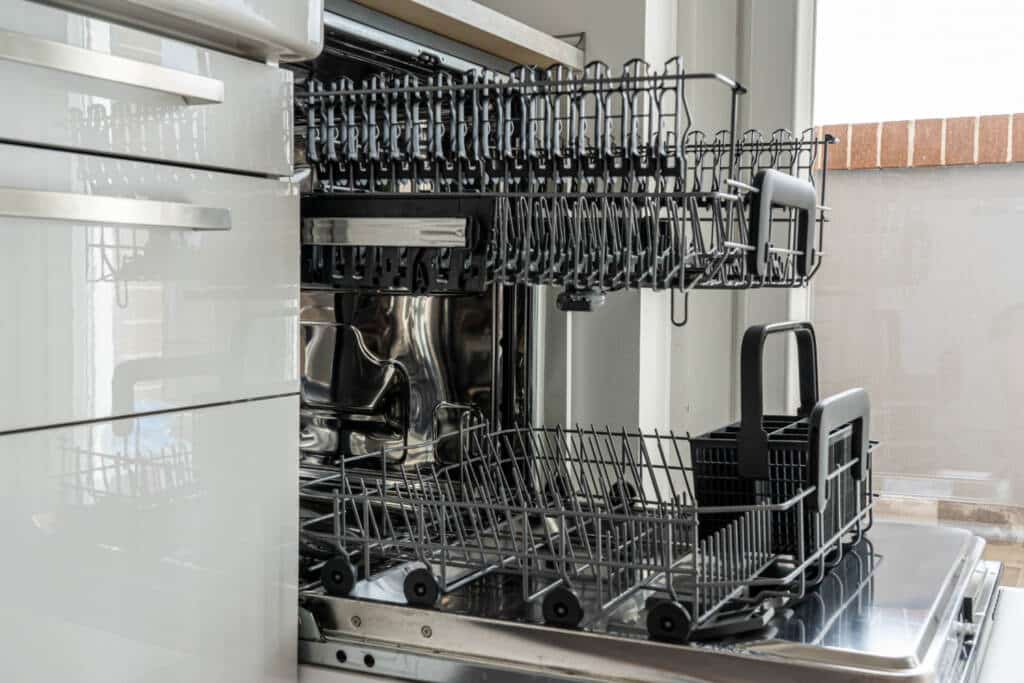

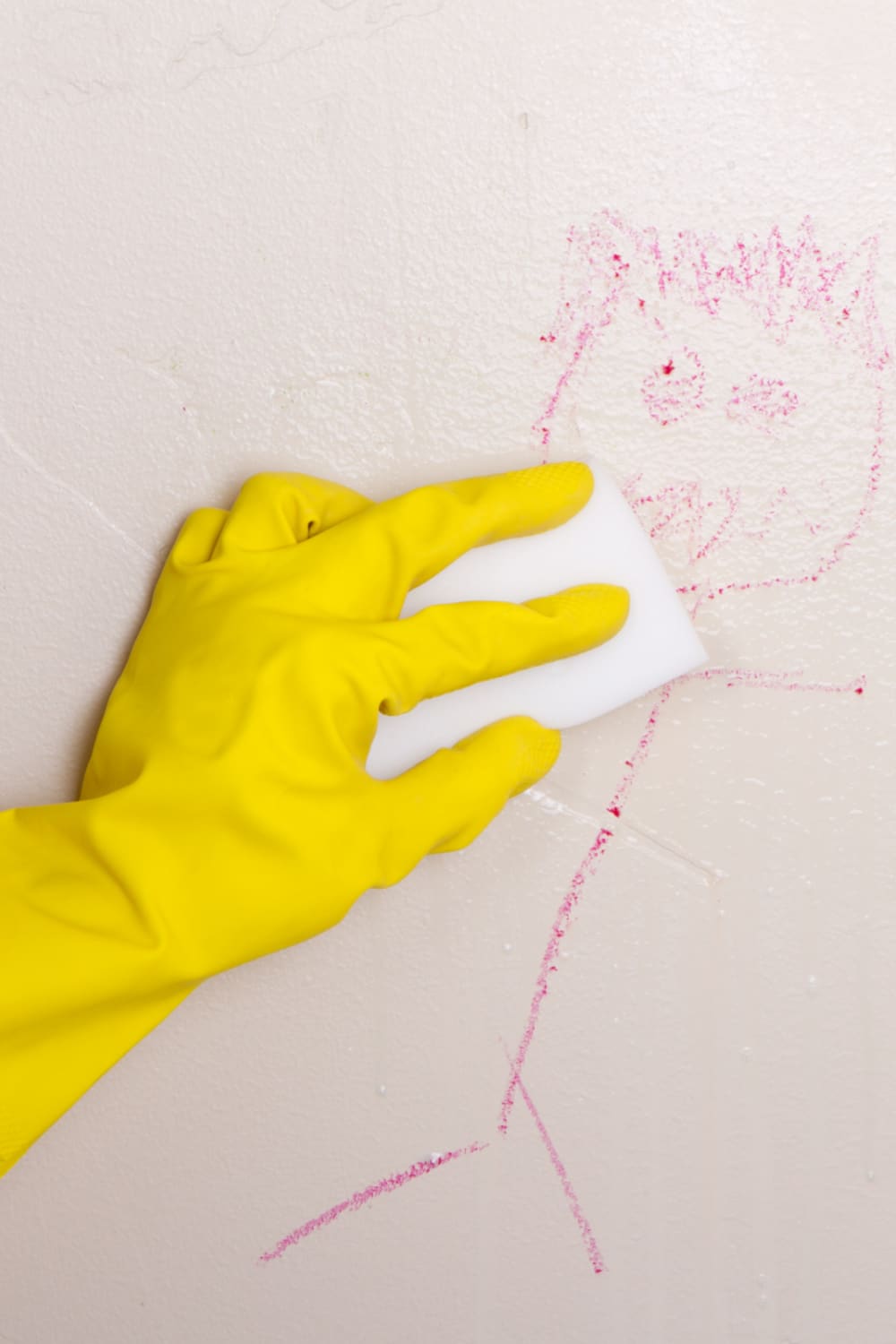
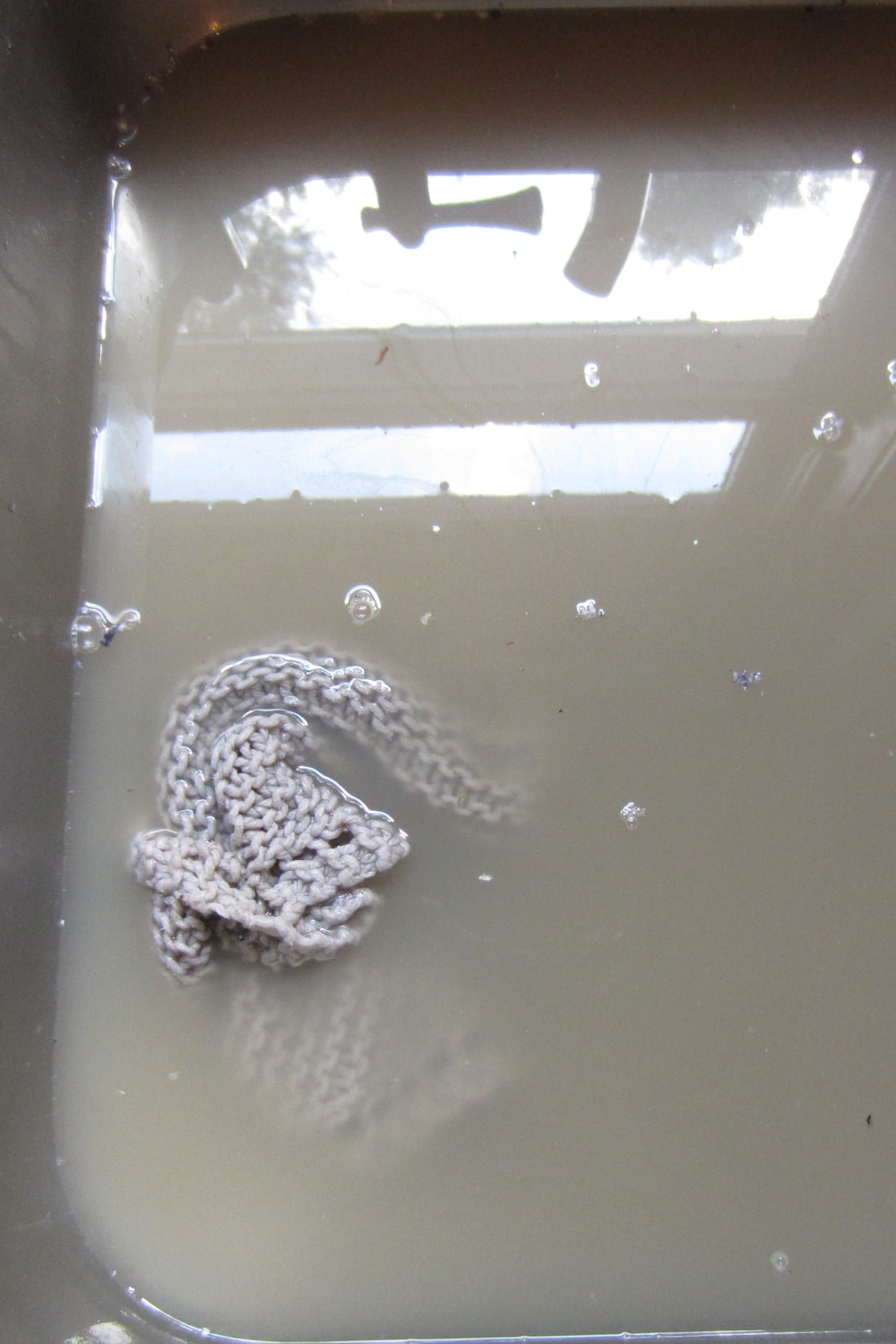

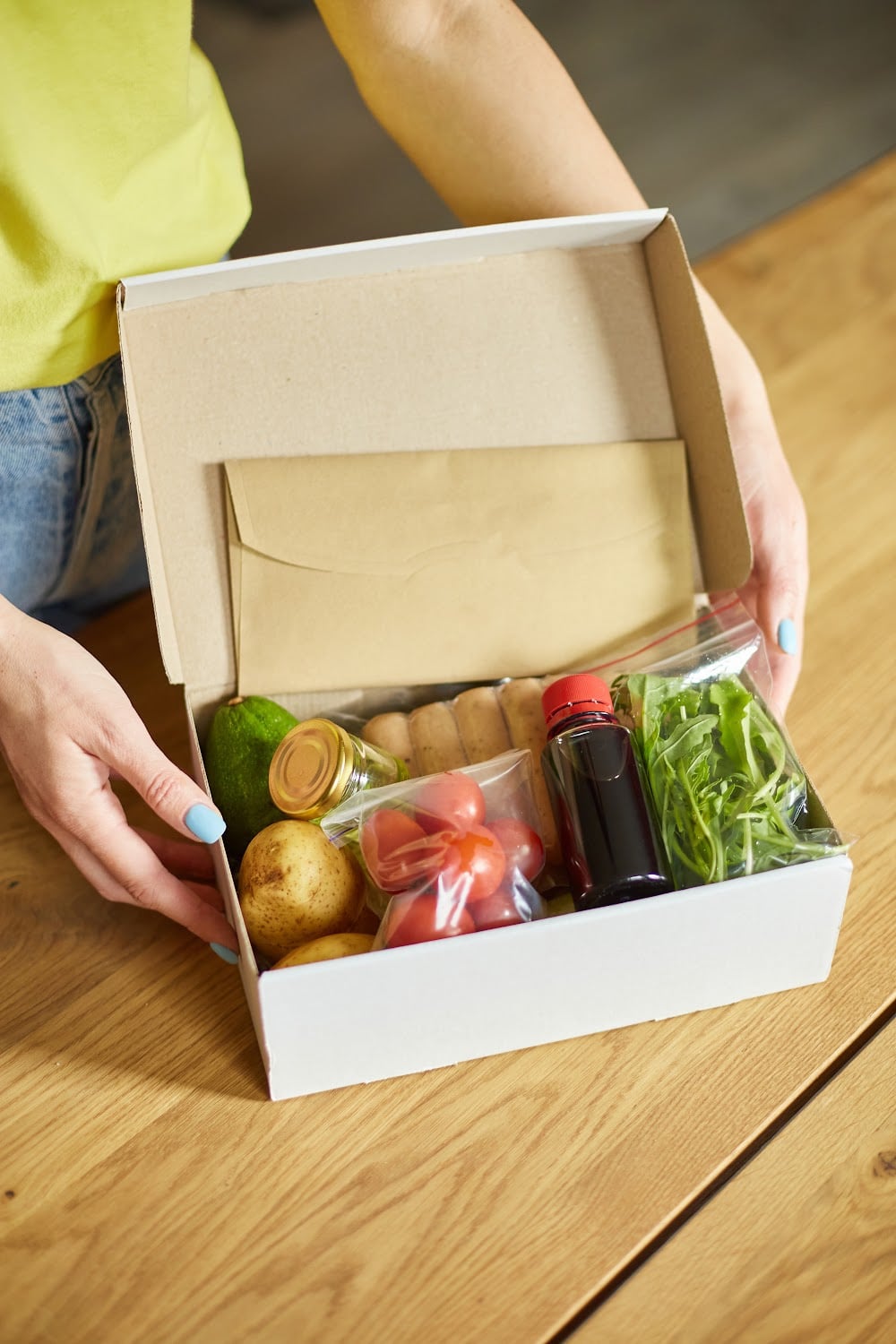
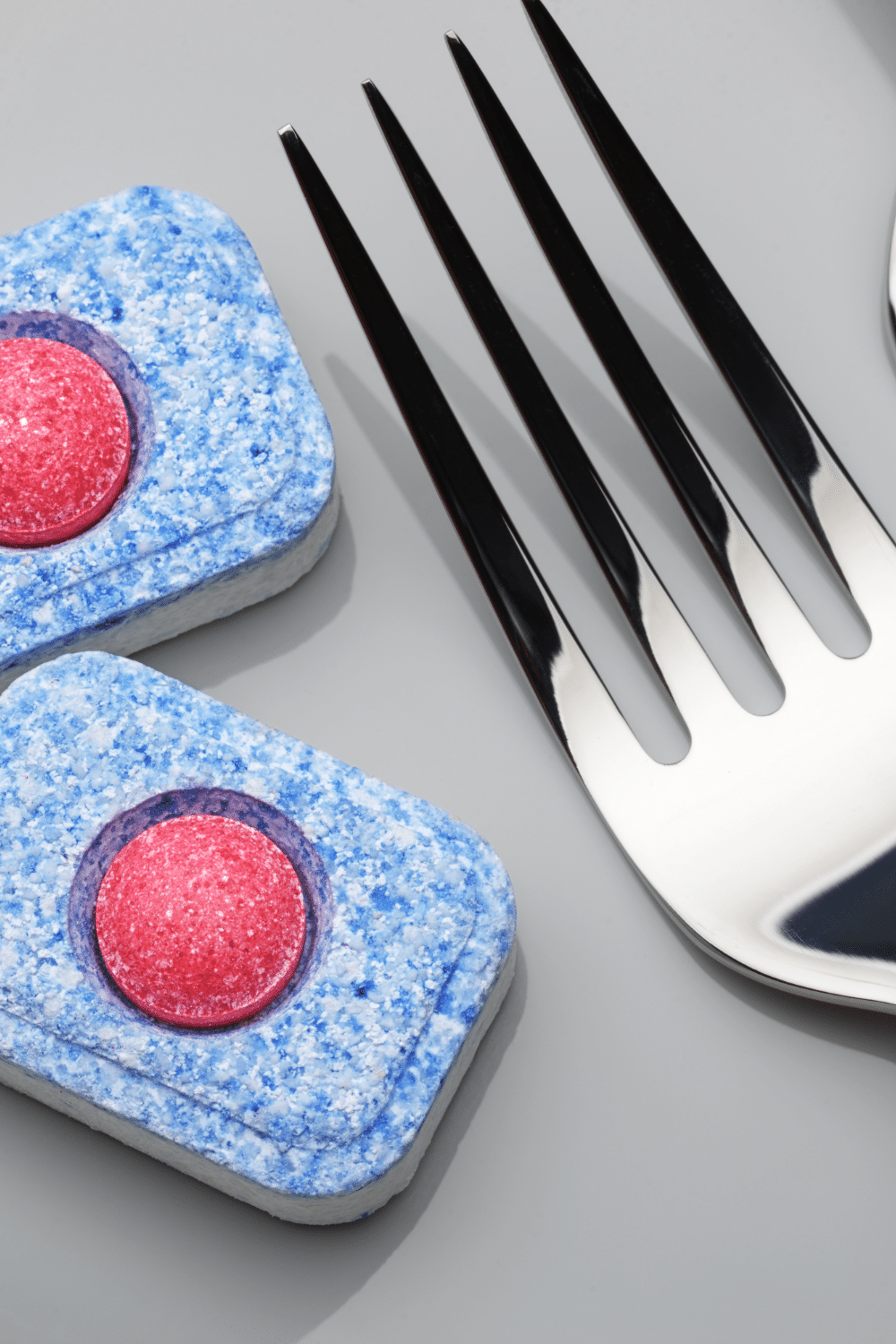

6 Comments